The 1953 Nash Metropolitan, a compact car that dared to be different, arrived on the American scene as a breath of fresh air. This stylish, European-inspired vehicle was a radical departure from the behemoths of the American automotive industry, challenging the status quo and capturing the attention of a generation seeking smaller, more economical transportation.
Introduced by Nash Motors, a company known for its progressive designs, the Metropolitan was a testament to the changing times. The postwar economic boom fueled a demand for practical, affordable cars, and the Metropolitan, with its compact size, lightweight construction, and fuel-efficient engine, fit the bill perfectly.
The 1953 Nash Metropolitan: A Compact Revolution

The 1953 Nash Metropolitan, a compact car produced by Nash Motors, was a groundbreaking vehicle that defied the automotive norms of the era. Introduced at a time when American consumers favored large, powerful cars, the Metropolitan offered a compelling alternative with its fuel-efficient design and stylish aesthetics.
Historical Context of Introduction
The Metropolitan’s arrival coincided with a period of significant change in the American automotive landscape. The post-World War II economic boom fueled a surge in car ownership, but rising fuel prices and urban congestion created a demand for smaller, more maneuverable vehicles.
Nash Motors, recognizing this emerging trend, decided to venture into the compact car market with the Metropolitan.
Significance in the Automotive Industry
The 1953 Nash Metropolitan holds a significant place in automotive history for several reasons:
Pioneering Compact Car Design
The Metropolitan’s compact design, with its small engine and lightweight body, was a radical departure from the large, gas-guzzling cars that dominated the American market. Its success paved the way for the widespread adoption of compact cars in the United States.
Fuel Efficiency and Affordability
The Metropolitan’s fuel efficiency was a major selling point in an era of rising fuel prices. Its relatively low price also made it accessible to a wider range of consumers, further contributing to its popularity.
European Influences
The Metropolitan’s design was heavily influenced by European compact cars, particularly the Austin A40. This borrowing of design elements from European manufacturers reflected a growing trend of international collaboration in the automotive industry.
Impact on American Car Culture
The Metropolitan’s success challenged the American preference for large cars and helped to shift consumer tastes toward smaller, more fuel-efficient vehicles. This trend would continue in the decades to come, with the rise of compact and subcompact cars becoming a defining feature of the American automotive landscape.
Design and Engineering: 1953 Nash Metropolitan
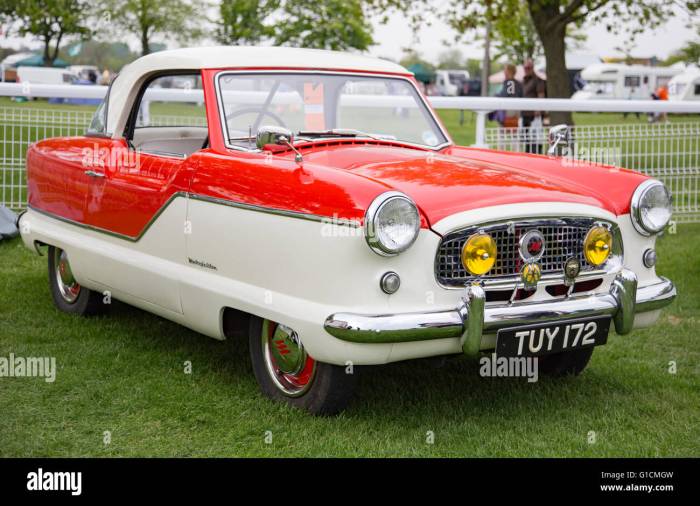
The 1953 Nash Metropolitan was a revolutionary automobile, not only for its compact size but also for its innovative design and engineering. Its unique features and construction techniques set it apart from its contemporaries and paved the way for future compact cars.
The Metropolitan’s compact size and lightweight construction were deliberate choices driven by the changing economic and social landscape of the post-war era.
Compact Size and Lightweight Construction
The Metropolitan’s compact size was a direct response to the growing demand for fuel-efficient and affordable transportation in the wake of World War II. The rising cost of gasoline and the increasing popularity of suburban living made smaller, more economical cars a necessity.
The Metropolitan’s lightweight construction, achieved through the use of a steel unibody chassis and lightweight materials, further contributed to its fuel efficiency and affordability.
Innovative Materials and Technologies, 1953 Nash Metropolitan
The Metropolitan’s development was marked by the use of innovative materials and technologies. The car’s body was constructed using a steel unibody chassis, a technique that was still relatively new at the time. This technique, which eliminated the need for a separate frame, helped to reduce weight and improve rigidity.
Additionally, the Metropolitan employed a variety of lightweight materials, such as aluminum for the engine block and fiberglass for the dashboard and other components.
“The Nash Metropolitan was a pioneering example of a compact car that combined stylish design with practical engineering. It was a testament to Nash Motors’ commitment to innovation and their understanding of the changing needs of the American consumer.”
Production and Sales
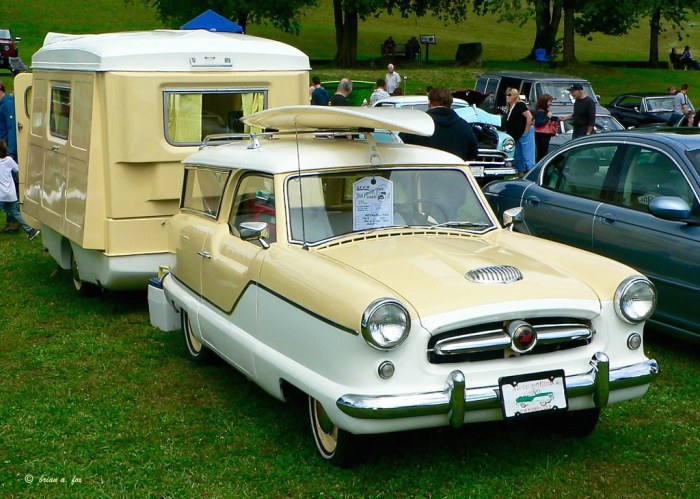
The 1953 Nash Metropolitan’s production and sales figures tell a fascinating story of a car that aimed to revolutionize the automotive market with its compact design and affordability. Its production process was unique, and its sales figures reflect the changing landscape of the American car market in the early 1950s.
Production Process
The Nash Metropolitan was produced at the American Motors Corporation’s (AMC) plant in Kenosha, Wisconsin. The production process was unique, as the car’s body was constructed in England by the Austin Motor Company and shipped to the United States for final assembly.
The 1953 Nash Metropolitan, with its diminutive size and European-inspired styling, was a bold departure for the American automaker. While it shared a name with the 1928 Nash Special 6 , which was a more traditional sedan, the Metropolitan was a radical concept for its time, offering fuel efficiency and a compact footprint in a world increasingly dominated by larger, gas-guzzling vehicles.
This forward-thinking design would help define the Nash brand for the next decade.
This approach allowed Nash to capitalize on the expertise of British manufacturers in building small cars, while also keeping production costs down.
Sales Figures and Market Reception
The 1953 Nash Metropolitan was a success in the market, selling over 10,000 units in its first year. Its compact size and affordability made it attractive to a new generation of car buyers who were looking for an alternative to the large, gas-guzzling cars that were popular at the time.
The Metropolitan was particularly popular with women, who found it easy to drive and park.
Comparison to Other Cars of the Era
The Nash Metropolitan’s success was due in part to its unique positioning in the market. While other manufacturers were focusing on producing large, powerful cars, Nash saw an opportunity to appeal to a growing segment of consumers who were looking for something smaller and more affordable.
The 1953 Nash Metropolitan, a compact car with a distinctive British-inspired design, stands as a testament to Nash Motors’ innovative spirit. While the Metropolitan was a departure from the company’s larger offerings, its roots can be traced back to the 1924 Nash Special 6 , a car that also prioritized efficiency and affordability.
The Special 6, with its lightweight construction and powerful engine, paved the way for the Metropolitan’s success, showcasing Nash’s enduring commitment to producing vehicles that were both stylish and practical.
The Metropolitan’s closest competitor was the Henry J, another compact car produced by Kaiser-Frazer, but the Metropolitan was more stylish and refined, and it quickly became the more popular choice.
Notable Features and Options
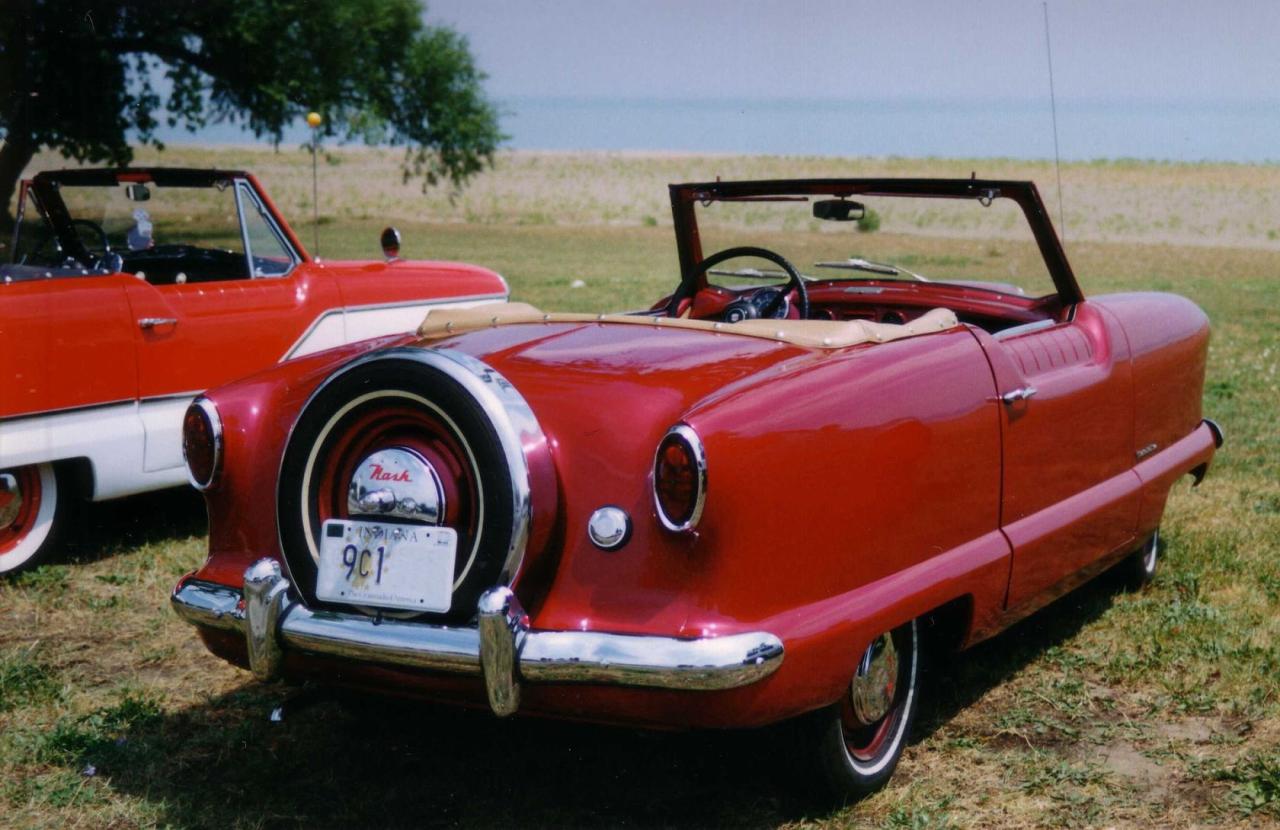
The 1953 Nash Metropolitan was a revolutionary car that offered a variety of features and options that were both innovative and practical for the time. While the Metropolitan was a small car, it packed a surprising number of features that appealed to buyers seeking a stylish and economical mode of transportation.
Notable Features
The Nash Metropolitan was known for its unique features, many of which were ahead of their time. These features were not only aesthetically pleasing but also served practical purposes.
The 1953 Nash Metropolitan, with its compact size and innovative design, marked a departure from the larger American cars of the era. It was a testament to Nash’s forward-thinking approach to automotive design, an approach that had been showcased earlier in the 1950 Nash Airflyte , which featured a revolutionary unibody construction and aerodynamic styling.
The Metropolitan, with its European-inspired styling and fuel efficiency, became a symbol of Nash’s commitment to innovation and adaptability in a changing automotive landscape.
| Feature | Description | Purpose | Significance |
|---|---|---|---|
| Unitary Body Construction | The Metropolitan’s body was constructed using a single, large sheet of steel, which was then welded together. | This construction technique created a very rigid and strong body, while also being lighter than traditional body-on-frame construction. | This innovative design helped to improve the car’s handling, fuel economy, and overall durability. |
| Independent Front Suspension | The Metropolitan featured an independent front suspension system that used coil springs and wishbones. | This system allowed for a smoother ride and better handling than traditional solid axle front suspensions. | The independent front suspension was a significant advancement in automotive engineering, contributing to the car’s comfortable ride and maneuverability. |
| Overhead Valve Engine | The Metropolitan was equipped with a 1.2-liter four-cylinder engine with overhead valves. | The overhead valve design improved the engine’s efficiency and performance compared to traditional side-valve engines. | The overhead valve engine was a significant improvement in engine technology, contributing to the car’s fuel economy and overall performance. |
| Optional Automatic Transmission | The Metropolitan offered an optional three-speed automatic transmission, known as the “Hydramatic.” | This automatic transmission provided a smooth and effortless driving experience, particularly in city traffic. | The availability of an automatic transmission was a major selling point for the Metropolitan, as it appealed to buyers who desired convenience and ease of driving. |
Available Options
The Nash Metropolitan also offered a variety of optional features that enhanced the car’s functionality and aesthetics. These options allowed buyers to personalize their Metropolitans to meet their specific needs and preferences.
| Option | Description | Purpose | Significance |
|---|---|---|---|
| Radio | A factory-installed AM radio was available as an option. | The radio provided entertainment and information for drivers and passengers. | The availability of a radio enhanced the driving experience and contributed to the car’s appeal as a modern and convenient mode of transportation. |
| Heater | A heater was available as an option to provide warmth during cold weather. | The heater provided comfort and warmth for occupants, especially during colder months. | The availability of a heater increased the car’s year-round usability and appeal to buyers in colder climates. |
| Whitewall Tires | Whitewall tires were an optional feature that added a touch of elegance and style to the Metropolitan. | Whitewall tires were a popular aesthetic feature in the 1950s, enhancing the car’s visual appeal and contributing to its overall style. | The availability of whitewall tires allowed buyers to personalize their Metropolitans and enhance their visual appeal. |
| Sunroof | A sunroof was an optional feature that provided a panoramic view and fresh air ventilation. | The sunroof allowed for a more open and airy driving experience, particularly during pleasant weather. | The availability of a sunroof enhanced the car’s overall enjoyment and provided an additional element of luxury. |
Visual Representation
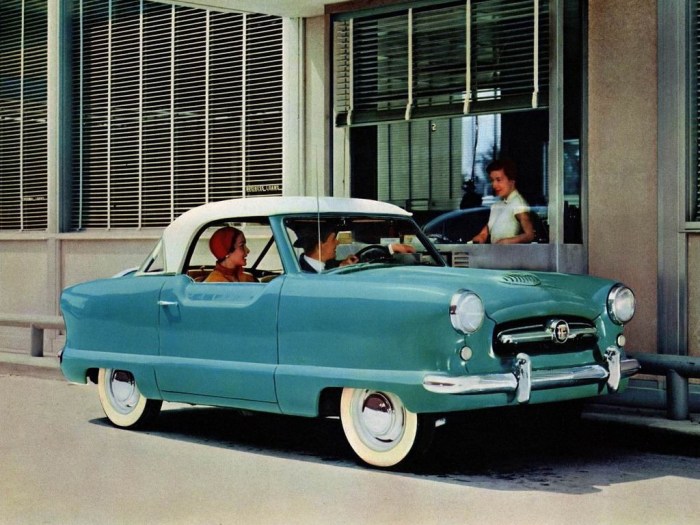
The 1953 Nash Metropolitan’s design was a departure from the bulky American cars of the time, showcasing a sleek and modern aesthetic that captivated the public. Its compact size and unique styling made it stand out on the road, becoming an iconic symbol of the burgeoning postwar automotive landscape.
Exterior Aesthetics
The 1953 Nash Metropolitan’s exterior was a testament to its innovative design. Its distinctive body lines, characterized by flowing curves and a rounded roofline, were a stark contrast to the boxy designs of its contemporaries. The car’s front end featured a large, chrome-plated grille with horizontal bars, flanked by rounded headlights.
The side profile was defined by its wide, wraparound windshield and a prominent chrome trim line that ran along the body’s side. The rear end was characterized by a rounded trunk lid and taillights that were integrated into the rear fenders.
Interior Aesthetics
The interior of the 1953 Nash Metropolitan was equally impressive. It featured a spacious and comfortable cabin that was designed with a focus on practicality and functionality. The dashboard was simple and uncluttered, with a large speedometer and other essential gauges prominently displayed.
The seats were upholstered in a variety of fabrics and colors, offering a choice of comfort and style. The interior was designed to maximize space, with a fold-down rear seat that could be used for additional storage.
Color Options and Trim Levels
The 1953 Nash Metropolitan was available in a range of colors and trim levels, allowing buyers to personalize their cars to their taste. The standard color palette included a variety of solid colors, such as black, white, blue, and green.
For those who wanted something more distinctive, there were also two-tone color options available, combining a solid color with a contrasting accent color. The trim levels included a basic model, as well as a more luxurious model that featured additional chrome trim and interior appointments.
Visual Representation of the 1953 Nash Metropolitan
Imagine a car with a distinctive rounded roofline, a wide wraparound windshield, and a large chrome grille with horizontal bars. The front end is rounded, with chrome-plated bumpers and rounded headlights. The side profile is characterized by a prominent chrome trim line running along the body’s side, and the rear end features a rounded trunk lid and integrated taillights.
The car is painted in a classic two-tone color scheme, with a solid color body and a contrasting accent color for the roof and trim. The interior is spacious and comfortable, with a simple and uncluttered dashboard and upholstered seats in a variety of fabrics and colors.
This is the 1953 Nash Metropolitan, a car that embodies the spirit of innovation and style of the postwar era.
Concluding Remarks
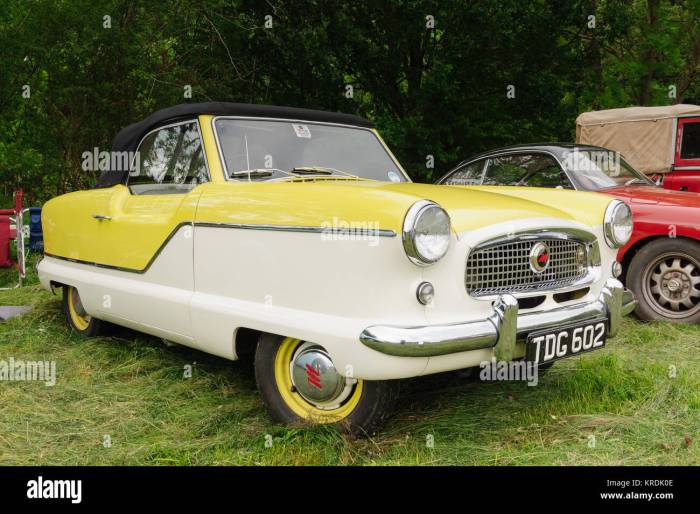
The 1953 Nash Metropolitan, despite its short lifespan, left an indelible mark on the automotive landscape. It demonstrated that smaller, more fuel-efficient cars could be stylish, practical, and desirable. Its legacy continues to inspire car enthusiasts and collectors, who appreciate its unique design, innovative engineering, and undeniable charm.